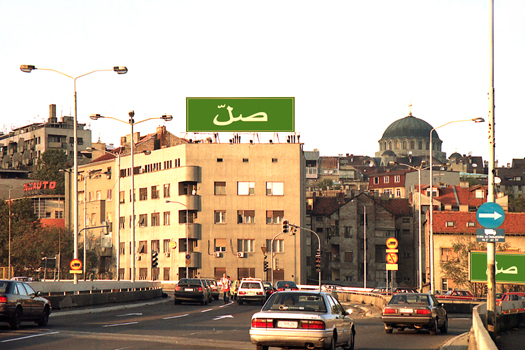Stories of Objects
There are cases when an object takes the place of the representation. An object, which is always an object of choice, then serves as the mediator between the subject, its fears and desires, and the symbolic sphere around him. It appears as bearing condensed and materialized enjoyment, for immediate use, with no need for deciphering. It is thereby leading a discourse of its own, based on it’s simple presence, or its role in the ritual, as in the story of the small praying machine, which does perform the prayer by just rhythmically turning the pages of a holy book, in the same rhythm as when someone is reading it with comprehension.
A set of objects of a similar kind makes this show, which can be mapped by the use of the signifiers such as: the Voice-Object, the Text/Object, the Instrument/Object, or the Body-Object. Their stories follow.
Voice / Object [Dejan Grba: Pray! (Too many Secrets), audio installation]
If we make music and listen to it…
it is in order to silence what deserves to be called the voice as the object a.[1]
Pray! (Too many Secrets) is a title of a work originally made as a site-specific audio and billboard installation in Graz in November 2001. It consisted out of a recomposed tune of traditional Muslim call to prayer (Ezan), which was played loud from a central spot in Graz according to the actual Salat hours, and a set of billboards, displayed throughout the city, showing the Arabic word ‘Pray!’ inscribed white on green background. A limited edition double CD (original soundtrack + video and still images) was issued.

Dejan Grba, Pray! (Too Many Secrets), sketch, 2000.
Within the framework of the Onthotautologies show, it is presented as audio installation only, played in the gallery according to the actual Salat hours, while the image from the poster is visible only in the catalogue. The difference between the two installments of the work bears the difference of the very spatial organization of the two venues: while Graz does in an extent align with the option for a panoptical view and thereby control, both by the structure of the town which has one point from which everything can be made hearable all around, as the Salat principles require, and by the developed visual advertising system, which can bring the billboard in a habitual way in the visual database of an ordinary citizen. On the other hand, Belgrade enjoys a status of constant disorganization, where systematic attempt fail and only small excess type of events do have a kind of an impute, both in the spatial sense and in the sense of any type of campaigns. Therefore, the visual aspect is left out, while the voice is spread in the gallery only.
What we get is a recomposed voice, which, in difference to the ‘proper’ vocal music as being attached to the proper singing body, is left recognizable but free-floating, to be attached to any phatasmatic body of the cultural intruder from the East, allegedly stealing our enjoyment. It is aimed to provoke, with its potentially disturbing nature, the reassessment of the ethical, practical and political constituents of individual and public identity that are tabooed or mystified by every culture. It attempts to escape the seductive force and irresistible appeal of the musical object, which bears a striving to domesticate the listener by the use of æsthetic pleasure, to put up a screen against what is unbearable in it. It does not go for illustrating something from the field of vision, but haunting it with the non-representable. This voice does not simply persist at a different level with regard to what we see, it rather points toward a gap in the field of the visible, toward the dimension of what eludes our gaze. We hear things because we cannot see everything.
-
Jacques-Alain Miller, Jacques Lacan et la voix, in La voix: Actes du colloque d’Ivry, by Ivan Fonagyi et al, p. 184, La Lysimaque, Paris, 1989. ↩
Stevan Vuković, from the text Onthotautologies (Stories of Objects), Onthotautologies exhibition catalogue, Belgrade Cultural Centre, Belgrade, 2002.